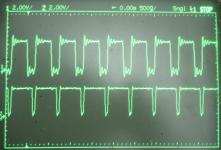Radix
Experienced Member
I'm not sure how that will help with an 11/53 board, if you can't move the memory starting address and faults in all three banks of ram...
Initially configuring it as 0.5MB and replacing the two suspect RAMS with known good parts in sockets will show if it is likely just simple ram failures...
Initially configuring it as 0.5MB and replacing the two suspect RAMS with known good parts in sockets will show if it is likely just simple ram failures...

